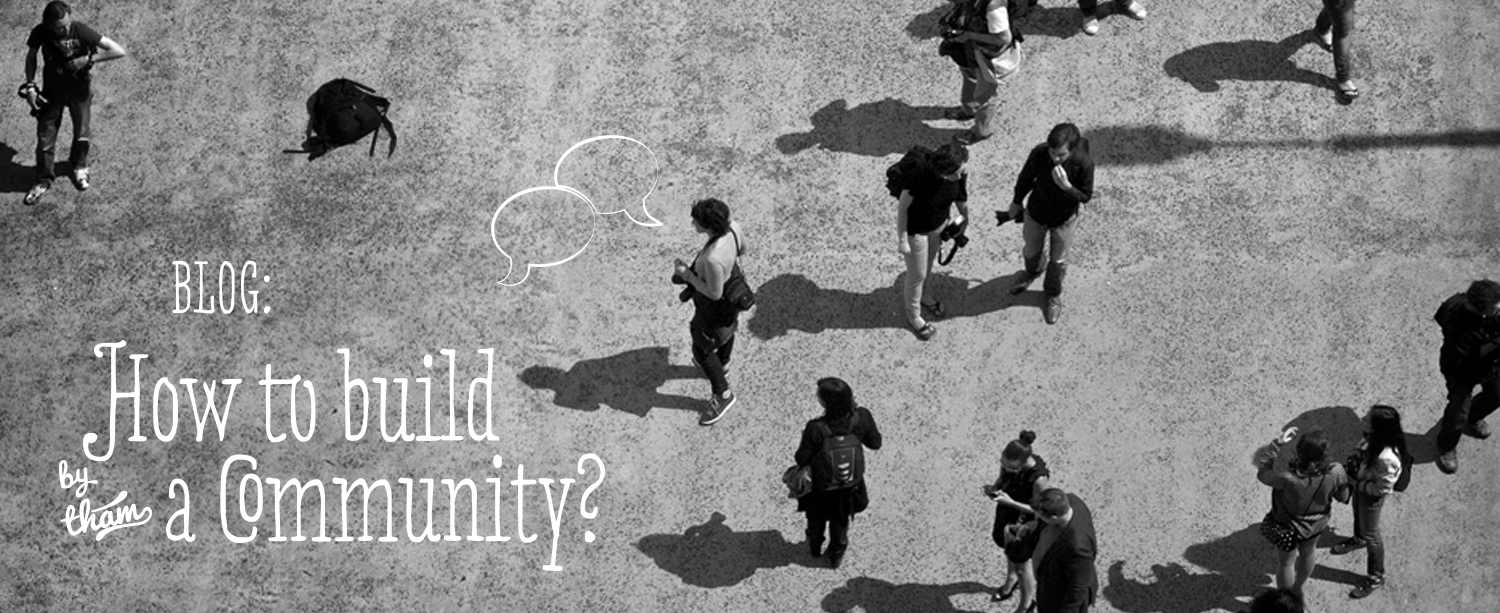7 tips to get you going.
This is a repost of a blog, with some minor editing, first published in 2009
“Can you build me a community?” Is a question many webspecialists often hear. Mostly asked by people looking for a technical solution for establishing and maintaining a community is as easy as possible. But the real work is the community itself: seven tips that I have gathered in my seven years of insights at Urban Photo Collective.

1. Passion and insights
A good balanced community starts with a passion and understanding your environment. My insight came on an evening in the summer of 2006 when I went photographing with a friend in town. Like the times I went photographing on my own, I had a theme in mind while photographing, I shared this little secret and she liked it and went along. I also noticed that people around me had bought brand new shiny cams, only to use on their holidays. A shame I thought, there is so much going on in your town! I realised that photography can be a social hobby and I began planning a new meeting with a theme that next month at a Flickr group that I created and named it: Rotterdam Urban Photo Collective.
2. Start small
Don’t start a comprehensive system and don’t expect it to automatically to happen. Start small and listen carefully to the needs of the group. I started a group on Flickr, just simply because most photographers were there. You can not build a second Flickr, you don’t want to, you need to use it in your advantage. Existing communities are very valuable, these places you find the people that have to find you. Meanwhile my community started growing among colleagues and friends, family and people who happen to pass by.
Over the years I learned which channels and methods of communication work well within this community. I started a blog, learned that the photographers needed a reminder to go to a meeting and started monthly mailings. Swapped the blog for a real website, adopted twitter as an important second communication channel when so many people became active over there and eventually shifted towards Facebook, currently one of our most important channels.
3. Long-term commitment
If you really like what you are doing, keep doing it! A long breath is important. At one time on a freezing February-evening I went shooting with just one photographer other than me. We photographed for twenty minutes at minus ten degree, and went a cozy warm pub afterwards. I realised we had a good time and there is no reason to quit. Success is not about quantity, it’s quality that makes the difference. Back then I could never have known that this community was about to grow towards over twenty volunteers and over thousand photographers who visited our meetings over the years. Growth of a network is a merit of treasuring your network and taking really good care.
4. Be personal
The best thing you can do for your community is take interest in the people who join, be personal! Though is becomes harder when the group grows, you’ve grown along with it and slowly getting a good grasp of the bigger picture of shared interests, values and social patterns. But always keep in touch and speak to people frequently, be part of it. It takes a lot of time, but it is the only way. There are quite some handy tools to keep track of your community. But the most important are the notes you take of things that you observe.
Know where you met people, what your talked about and what other interests they have. Know who your most passionate ambassadors are, know what thrives them. Maybe the community started with you and the great idea you had, but it’s not yours anymore. So be self critical and kill your darlings if you need to. Change things if you need to, do whatever is best for the community. Oh and return the favour: show them who you are en why you are doing what you’re doing! Be genuine and humble.
5. Make choices
You don’t have to do everything someone asks you to alter, you need to make decisions based on trends you see. And you need to follow trough on what you decide. As a community manager it’s important that you take a stand, make clear choices this makes the framework of the way the community acts and people can decide for themselves if they like to be part of it. Never take it personal if someone thinks it’s not for them, it’s their right and if you are clear on the outlines of the community they can make a deliberate choice.
If you are clear on what the network stands for, the people who connect are very valuable because they know why they are here and will carry out the message. In the long term these people can play important roles. It’s better to have a small network of motivated people than a large network where half of it is barely involved. Within Urban Photo Collective we made a manifesto, so everyone knows what the collective stands for. It also maintains focus for the organisation, we can test every idea and any decision we want to make against it. A perfect way to keep the mission in mind. Rules are not restrictive, they determine and preserve the framework and thus the culture of the group.
6. Be aware
Be aware that a network is fragile, circumstances can easily shift the way people feel about it. For instance when you decide to take a certain sponsors offer which could have huge impact on the credibility of a community, that claims to be independent. I turned away a couple of offers that would bring in money but would have brought a change to the noncommittal culture that would be irreversible. Sure, it’s different for every community, but still important to make conscious choices all the time.
7. Be unique
Be unique, people will always think “What’s in it for me?” before they decide to take part. You can only succeed if you create value, what makes this community unique? what do you have to offer? Figure if there is a certain incentive, a niche topic or service you can offer and build your brand around it.
Get going!
You can approach a community very technically by the requirements for the platform, but community management is really a so called soft skill. Approach your community as friendship: listen, appreciate, communicate and participate in an authentic way. It will take a lot of time, but if this is what you want it is worth the effort, good luck!
If you are interested in my story don’t hesitate to contact me, I am happy to tell you about it!
Tags: Urban Photo Collective




